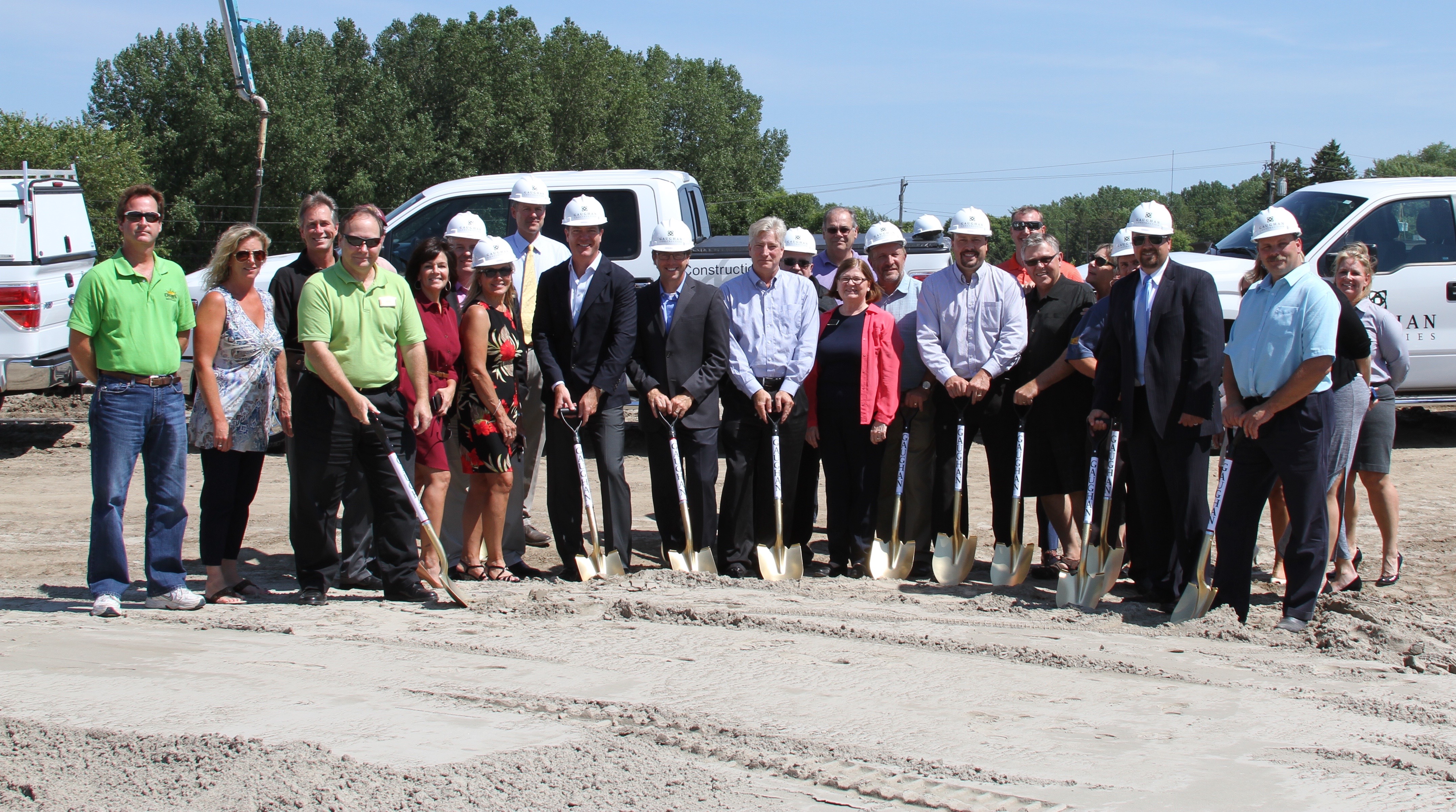Trends that will Drive Investment and Development in 2017
2017 is just around the corner, and Americans are pondering what their day-to-day lives will look like in the coming year. Technology is advancing rapidly, and several things exist today that our grandparents would never have deemed possible.
The leader of the pack is the internet. As more and more devices become smart-wired and connectable to the internet, new ideas and services are becoming a reality.
Large metropolitan cities and high rise buildings are now able to use the internet to monitor and control things such as traffic flow, water resources and energy allotment. This helps conserve valuable resources and enables them to operate more cost-efficiently.
Consumers can now purchase electric crock pots that will warm dinner at the touch of a button, from miles away. They can log on to a website and view their child or pet in a daycare setting. They can also set their home’s security system and view their property from a camera lens while sitting in their office desk.
Commercial real estate developers and brokers are getting involved in this trend by using 3-D tours of homes to show buyers and potential customers “actual” and “what if” scenarios. Savvy business owners are capitalizing on the success of popular online games and are creating “lures” so that perspective customers are drawn to their spot.
City governments are teaming up with commercial real estate developers to revitalize the downtown areas in many major U.S. cities. Live, work and play communities are making it easier for the average worker to be able to take care of all of his or her needs without driving a car or getting caught in commuter traffic.
For those companies that still want to operate in major U.S. cities, it’s not uncommon for them to get subtenants who don’t compete with them. These subtenants may rent out other units or floors in a building owned by a major business.
Commercial real estate companies are finding it harder to get financing as the larger banks crack down on their lending policies. As a result, many are calling on local or regional banks to ask for financing.
Since these smaller credit unions and banks already have an interest in seeing their own businesses thrive in a slow development season, they are usually more than happy to finance the loan. This becomes a win-win situation for both them and their borrowers.
As baby boomers retire and move out of the workforce, they are seeking affordable housing. This trend is shared with millennials who no longer see their first job as being a permanent career. Both segments of the population want to be free to travel and to pursue a lifestyle that fits their whim.
More baby boomers are retiring than new income earners are entering the workforce. This is creating a labor shortage in several industries, especially among blue collar workers. In addition, some people are extending their college years, putting off a formal entrance into the labor force until they have achieved a higher education degree.
The millennials are also more hesitant to put down roots. However, the retirees may be selling that large home where they raised their family in favor of a trendier and smaller living space. Both generations are happy to use public transportation when it’s easy to access and when they are made to feel safe and secure.
Another trend on the rise is online shopping. Companies are trying to beat each other to the punch by offering same or next day delivery. In order to accomplish that task, they need to have a lot of warehouse space available and keep it supplied with the hottest items.
Proximity to the customer remains an issue. As the New Year approaches, many companies are eyeing abandoned super stores and malls and turning them into “last mile” distribution centers. Old fashioned rail cars, shipping containers and delivery trucks are still on the main supply chain. However, everyone is waiting to see if “drone delivery” will really be implemented.
More and more Americans are moving to the suburbs, which is another reason why city governments are fighting to revitalize their downtown communities. Businesses are also continuing to move some of their main offices to the suburbs, citing lower rents and more space available for the money as incentives.
Once these consumers and businesses head for the suburbs, the single home and new apartment industries benefit, because everyone needs a place to live. New home prices are rising by about five percent a year, but the new job creation rate is only growing by about 1.7 percent per year.
As more and more of the general population moves to the suburbs, the need increases for medical offices, restaurants, shopping, specialty stores, entertainment plazas, religious services, parks and grocery stores. This, in turn, benefits the commercial real estate industry by creating a demand for their services.
There are many new and exciting changes in store for 2017. Education will continue to be very important, and older workers will need to embrace added career training in order to stay ahead in a changing work environment. Business developers will need to build smarter, more durable structures and operate them more efficiently. City governments need to work together to create safe communities in order for their areas to succeed.
Technology will continue to lead the pack. Americans will continue to compete for business on a global scale. The best way to succeed in this changing world will be for the average business to operate smart, lean and with good conscious.
-Patrick Gaughan
The Commercial Construction Process – Part Two
When we left off with part one of the commercial construction process, we were discussing how an architect develops plans and specifications that a contractor uses to bid the project. (As a side-note, a contractor can use the plans and specifications to assist with a remodel, too, but for the purposes of this blog, we are only discussing new construction.)
It is good practice to solicit bids from at least three general contractors and then determine which one will be the best fit to work on the project. The contractor needs to view a list of building materials. This is usually provided in the plans and specifications. A determination can then be made on material and labor costs.
Once a general contractor is selected, that person will often bring his or her own sub-contractor team in to consult on the project. Several items will have to be installed in the new building, including HVAC, electric wiring, mechanical devices, utilities and plumbing. The contractor will apply for a building permit at the city. Once the city approves the building permit and the fees are paid, work can begin.
The first step in putting up the building is to break ground. Many new owners love to bring their personal shovel in to get a picture made of themselves scooping up the first pile of dirt for their new business address. After the festivities have commenced, they step aside and excavation begins.
During the excavation process, the soil is removed and/or compacted to assure a suitable base for the building foundation. Rocks, tree roots, glass, debris and the like are removed during this period.
Next, if any pipes need to be installed under the building for sewer and water, this needs to be done before the foundation is constructed. No work can be performed until this occurs. After that, construction of the foundation usually consists of pouring concrete within forms prepared by the contractor.
After the concrete foundation has cured, the initial framework can begin. During this time, the contractor will construct the exterior walls and roof. Once the building shell is completed, interior can begin. At this time, insulation, interior walls, drywall, doors, HVAC, electrical, plumbing are all completed.
Look for part three of our series to continue in a few weeks.
-Dan Hebert
The Commercial Construction Process – Part One
Let’s say you are a small business owner and are ready to take your business from a rental unit to your own brick and mortar location. Assuming you have a lot of capital and want to build in an undeveloped location, how do you get started? This is a three-part series that will walk you through the steps.
The first thing to do is to meet with a commercial real estate broker, who will work with you to select just the right spot for your desired business. You should already have an idea of the general size of the building and know how much square footage you will need in order to operate successfully.
If you are purchasing land, then once you find something suitable and enter a contract, you will go through the due diligence stage where a number of items must be checked. One of the first things to do is to have an environmental sample performed. This will check for a variety of important things such as the structural foundation of the land, any chemical or biological waste that may be present, water analysis and air pollution.
As the land is being evaluated, it’s also important to have the title company check for any liens against the property. While this is going on, you will want to check on the neighboring infrastructure. Is your new location zoned for the type of business you want to open? Are other businesses in the area doing well? Is the area growing?
Next, have the property surveyed. This will tell you whether any easements are there and show the legal boundaries that you must operate within. Are any new roads being planned by your city or state government that would cut off access to your property?
Will the location you’ve chosen give you easy access to rails or highways? Will large trucks bearing your supplies be able to get in and out for delivery? Will your customers have an easy time parking, and will you be able to develop special parking to meet the codes established by the American’s with Disabilities Act?
If you’re sure that your new location meets all of the criteria listed above and any other special city or state requirements, then it’s safe to purchase the land.
After the purchase of land, it’s time to hire an architect. This person will be responsible for the general look of your building. It’s fine to suggest building styles or ideas that you like, but remember that this person is the professional and will need to consider the overall function of the building as he or she develops the initial sketches.
A good architect will visit the proposed building site. Then, he or she will use the survey and will also be looking at land measurements in order to render the drawings. At this stage, it will just be an initial design concept. Most architects will provide a set of sketches for you to choose from. These are often referred to as schematic designs. Rough costs are mentioned during this phase.
After you work with the architect to fine tune the design (known as design development), the architect will begin developing it into blueprints. These blueprints (sometimes known as construction documents) are the tools that contractors will use as you move into the bidding process.
Look for part two of our series to continue in a few weeks.
-Dan Hebert
A Day in the Life of a General Contractor
The day starts early for a general contractor. He or she is up before the sun and plans out a schedule for the day. After checking email and grabbing paperwork, he or she is out the door and running.
The typical first stop of the day is the construction site. There the general contractor will meet with the subcontractors and review the progress that they have made since his or her last visit.
The general contractor has already hired several subcontractors through a bidding process. Once a subcontractor is selected, plans and specifications are reviewed to value engineer the project. This ensures the client will receive the best materials and equipment to meet any current and future needs. The general contractor needs to pay particular attention to the project budget during this process.
While the general contractor has several construction sites to manage at once and will be driving all around town, the subcontractors will generally stay on site to supervise their team of workers. Subcontractors typically include carpenters, electricians, plumbers and others.
It is the responsibility of the general contractor and the subcontractors to ensure that the work performed is in accordance with the plans and specifications while following state laws and local building codes. It is also everyone’s responsibility that all work is performed in a safe manor adhering to applicable safety regulations.
After finishing the meeting with the subcontractors, the general contractor may proceed to a mid-morning pre-bid meeting. There he or she will find architects and engineers who have been selected to design new buildings envisioned by a commercial real estate developer.
This commercial real estate developer could be working for the government or a private entity, but he or she has been tasked with building or redesigning an area for future use. He or she has already met with an architect and engineer in order to communicate the ideas of the design.
The architect has spent time preparing plans and specifications and consulting with engineers to make sure that the building design is feasible and follows building codes.
When the general contractor arrives at this meeting, he or she may see other contractors there. They may be gathering there to get information on new developments coming to the area. After having the opportunity to hear about the new project, inspect the site and acquire the plans and specifications, the general contractor will return to the office and begin working on a bid.
The commercial real estate developer or the client will choose the best value bid and award the building rights to that general contractor. Often, the best value bid is not based solely on price but will include other considerations, such as general contractor past experience and project team. The bid usually details the price of labor and materials for the project. Some general contractors take their fee as a percentage of the total building cost. Others may charge a flat fee after considering the project.
When the general contractor returns to the office, he or she has a meeting with his or her assistants to determine the scope of work for the project and what subcontractors need to be contacted to obtain bids. The assistants will then contact subcontractors required for the project to discuss their specific portion of work.
Finally, at the end of the day, the general contractor will make phone calls, order new supplies, interview new subcontractors for upcoming jobs, approve invoices for payment, and review the progress of the bid he or she left the team in charge of.
As the sun is starting to set, the general contractor grabs his or her paperwork and heads for home. Another long but successful day is in the books, and he or she is excited to see the new developments coming to life within the community.
Reducing Waste at the Construction Site
In a recent article on the Demetree Real Estate blog, construction manager Wallace Dostal explained four ways that waste at a construction site can be reduced. Currently, the construction industry produces one-third of landfill waste, according to Dostal. He stresses that planning ahead and putting waste management practices into place will reduce the effect that the industry has on waste production.
We at Gaughan Companies are encouraged by Dostal’s insistence that the waste produced from a construction site can be reduced. We hope that more construction companies will put these practices into place.
You can read more here on the Demetree Real Estate blog.
Gaughan Completes Phase Two of City Center Commons
Gaughan Companies announces the completion of its latest development project called City Center Commons, located along highway 61 on the south side of Forest Lake. The new commercial buildings provide a clean, modern look and feel to the community.
The building will occupy several tenants including Keller Williams in one building, along with Thrifty White and Maplewood Oral Surgery in the second building. There is one additional space available for custom build-out which has the potential for a new franchise restaurant.
“We’re adding residential rooftops to the Minneapolis suburbs again and demand for more commercial and retail space is imminent based on the region’s population growth,” said Patrick Gaughan, in reference to the return of growth in the economy after a post-recession lull.
Gaughan Construction continues to embrace the growth of the economy and the future of the company.
Minnesota Construction Industry on the Rise?
In April of 2016, Minnesota added 7,400 employment opportunities with great thanks to the development and construction industries. Statistics indicate a solid increase in development projects throughout Minnesota over the past several months. The construction industry is currently booming with this month having the largest increase in production within the past 25 years. These factors attribute to Minnesota’s lowering unemployment rate which is now approximately 3.7%, and a 1.7% increase in job growth over the past year. Specifically in the Minneapolis and St. Paul region, employment growth increased by 1.8%. These trends help to provide a positive outlook for what the future of construction may hold.
Gaughan Construction Celebrates Ground Breaking of City Center Commons Project
Gaughan Construction broke ground on a new 2 building office medical project in Forest Lake. The new City Center Commons project is the first “ground up” construction project that Gaughan Construction has developed in recent years. City Center Commons is located along highway 61 adjacent to the recently built Forest Lake City Center Building, The project is scheduled for completion Q4 2015 into Q1 2016. City Center Commons has signed leases with Keller Williams, which will be the sole occupant for the 8,000 sf building. Maplewood Oral Maxillofacial Surgery and Thrifty White will anchor the adjacent 11,000 sf building. Negotiations are in the works for the remaining square footage for the 11,000 building.
“This is a great project for the City of Forest Lake and the community. We are proud to be developing this project and look forward to provide good quality space for tenants.” – Dan Hebert – VP of Commercial Accounts – Gaughan Companies
A solid foundation since 1969, Gaughan Companies provides the Twin Cities area with a full service commercial real estate company. We deliver consistent performance through unparalleled professionalism and personal service. Visit our website at www.gaughancompanies.com for more information.
Gaughan Companies to Host New Tech Forward Eatery
When you think burgers, fries and shakes, you probably don’t think high tech service. One of Gaughan’s newest tenants is looking to change all that with Diggity’s Drive Up.
On paper, Diggity’s is your classic burger shack served with a heaping helping of Americana. Unlike the drive ups of yesterday, you won’t find any rollerskating candy stripers whisking away orders to hungry patrons. In fact, you won’t find any servers at all.
Read More








